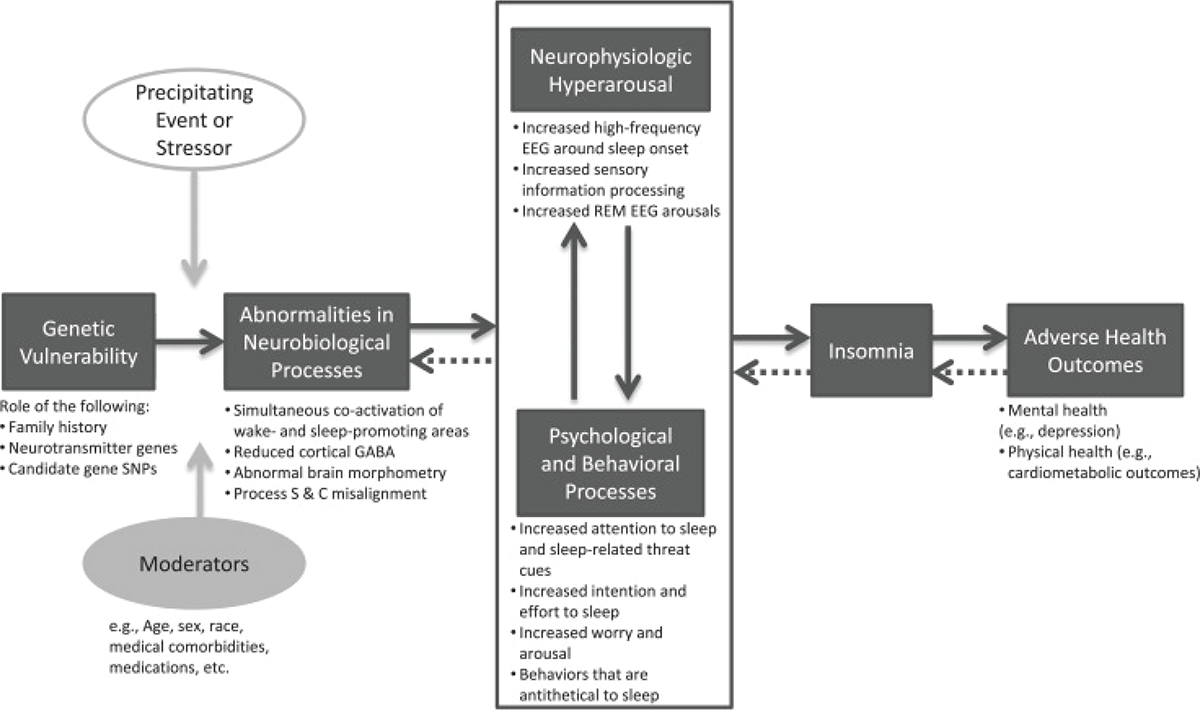
Integrative Medicine Case Reports, Volume 4, Issue 2 (July), 2023
Impact of Mind Sound Resonance Technique (MSRT) as an add on to Integrated Approach of Yoga Therapy (IAYT) in stress-induced insomnia: A single case report
KEY WORDS |
ABSTRACT |
|
Chronic insomnia
|
This case report represents a 36-year-old female patient who visited Arogyadhama (S-VYASA Deemed to be University, Bangalore), with the chief complaint of Chronic Insomnia along with comorbidities like Obesity grade II, Prediabetes Mellitus type II, and Prehypertension. The patient had a history of depression and anxiety brought on by a severely stressful life event. On 3rd January 2023, she visited a medical professional in Karnataka (Bangalore) and was diagnosed with Chronic Insomnia due to psychological stress and placed on medication. At Arogyadhama, during her 27 days of stay, the patient has introduced to IAYT (Integrated Approach of Yoga Therapy) practices and naturopathy treatments, amongst which MSRT (Mind Sound Resonance Technique) demonstrated notable improvements in the patient’s condition.
doi: 10.38205/imcr.040265 |
|
*Corresponding Author:
|
Introduction
The International Classification of Sleep Disorders, Third Edition defines insomnia disorder as “a complaint of difficulty initiating or maintaining sleep associated with daytime consequences that are not attributable to environmental circumstances or insufficient opportunity to sleep” (1). Insomnia is a prevalent condition that can occur either independently or along with other comorbidities. Insomnia is the most common sleep problem, affecting a huge proportion of the population on a situational, recurring, or persistent basis (2). Chronic insomnia is defined as symptoms that have remained for at least three months at a frequency of at least three times per week, whereas short-term insomnia is defined as symptoms that have persisted for less than three months. 30% to 50% of the population suffers from occasional, short-term sleeplessness (3). The prevalence of chronic insomnia conditions in developed countries is believed to be between 5% and 10% (4).
Chronic insomnia has been linked to a variety of negative impacts on function, health, and quality of life. Epidemiologic research demonstrates that chronic insomnia patients have a significant impairment in functional status (5). In addition, increased work absenteeism and occupational and motor vehicle accidents have been extensively reported (6). In general, effective therapies for insomnia include behavioral, cognitive, and pharmaceutical approaches. Yoga is an ancient form of exercise that emphasizes strength, flexibility, and breathing to improve physical, mental, and spiritual wellness (7). Yoga lowers the sympathetic tone and increases parasympathetic dominance. Yoga is a mindful kind of physical practice (8). Mindfulness improves sleep by increasing melatonin levels, lowering hyperarousal, and correcting stress-related cardiac and respiratory irregularities (9).
Mind sound resonance technique (MSRT) is an advanced mindful relaxation yoga technique that uses mantra to generate resonance and primarily functions through the Manomaya Kosha to induce deeper relaxation for both the mind and the body (10). MSRT can assist you in improving your overall well-being, concentration, willpower, and relaxation. MSRT has been proven to improve stress, anxiety, depression, self-esteem, sleep quality, blood pressure, heart rate, and psychomotor function in patients (9).
Pathophysiology
The etiology and pathophysiology of Insomnia incorporate genetic, environmental, behavioral (Figure 1), and physiological components that result in hyperarousal. Insomnia is frequently seen as a hyperarousal illness, characterized by heightened physical, cognitive, and cerebral activation (11). Insomnia patients may have physiological hyperarousal in both the central (cortical) and peripheral (autonomic) nervous systems. Insomnia hyperarousal can also refer to cognitive and emotional processes, and some hypotheses argue that cognitive and affective hyperarousal at bedtime can result in both acute and chronic insomnia (12). The physiological, cognitive, and cortical arousal that is governed or moderated by homeostatic and circadian rhythms influences the etiology of insomnia (13).

Figure 1: Describes the pathophysiology of insomnia (14).
The main cause of the chronic insomnia in this patient was her depression and anxiety. Research has shown that patients with depression and anxiety show abnormalities in sleep parameters. Patients suffering from depression and anxiety, commonly have complaints of disrupted sleep. All three diseases are interlinked with one another (15).
Case Presentation
A 36-year-old female patient approached a residential integrative medicine facility in Bangalore with presenting complaints of Chronic Insomnia since 2021. The patient had suffered from anxiety and depression, induced by a severely stressful life event, which resulted in trouble sleeping. She had trouble initiating and maintaining sleep and for that, she was kept on medication by a medical professional. She was also diagnosed with prediabetes, prehypertension, and Obesity grade II. She was kept under medications for her condition which is mentioned in (Table 1). At Arogyadhama, during her 27 days of stay, as a part of her treatment, an integrated protocol of yoga sessions twice a day, nutritional counseling regarding dietary modifications, and a specific dietary protocol, an individualized naturopathic treatment schedule was introduced to her.
Table 1: Medicinal history at the time of admission
| Sr. | Medicine | Duration |
| 1. | Forxigo 10 mg | 1-0-0 |
| 2. | Zolfresh 10 mg | 0-0-1 |
| 3. | BTN Ultra | 0-1-0 |
IAYT protocol treatment regimen
At Arogyadhama specific Yoga for Obesity, Diabetes Mellitus & Hypertension was introduced to the patient, which is mentioned in (Tables 2, 3, 4, 5). Every Dynamic practice was followed by respective chanting. The patient was given guided instructions regarding each practice, to avoid any kind of complications (9).
Breathing Practices (10–15 mins)
Table 2: Breathing practices introduced to the patient under the IAYT approach
| Hands in & out breathing-1
5 – Rounds |
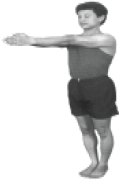 |
Hands stretch Breathing
5 – Rounds |
 |
| Ankle Stretch Breathing-3
5 – Rounds |
 |
Rabbit breathing
5 – Rounds |
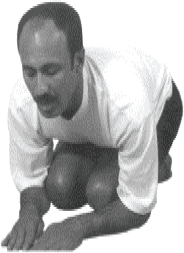 |
| Sasnkasana Breathing
5 – Rounds |
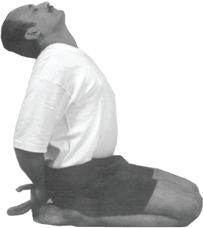 |
Tiger Breathing
5 – Rounds |
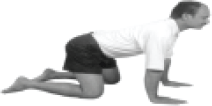 |
LOOSENING & STRETCHING (10–30 mins)
Table 3: Loosening & stretching introduced to the patient under the IAYT approach
| Jogging
(20–30 seconds) |
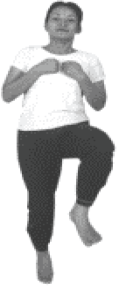 |
Spinal Twisting
7 – rounds |
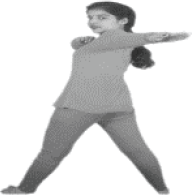 |
| Side Bending
7 – rounds |
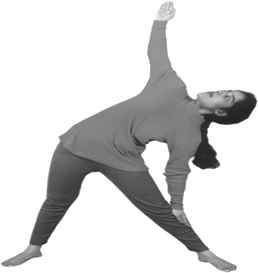 |
Toes Touching
7 – rounds |
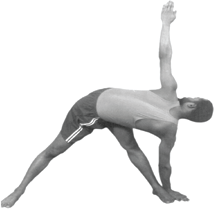 |
| Forward & Backward
Bending 7 – rounds |
 |
ArdhKati
7 – rounds |
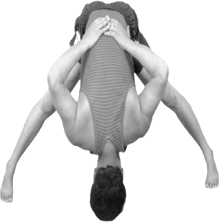 |
| Pawanamuktasana Kriya
7 – rounds |
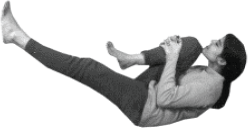 |
Cycling
7 – rounds |
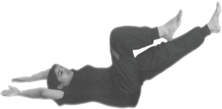 |
| Butterfly
7 – rounds |
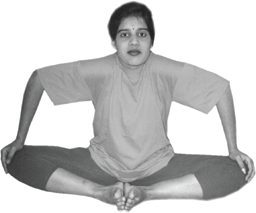 |
Dorsal Stretch
7 – rounds |
 |
| Tiryak Paschimottanasana
7 – rounds |
 |
Alternate Straight- Leg Raising 7(R) | 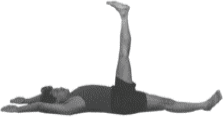 |
| Suryanamaskara
2–6 cycles |
Quick Relaxation Technique
(QRT) 5 mins. |
 |
YOGA ASANAS
Table 4: Yoga asana introduced to the patient under the IAYT approach
| STANDING POSTURE | |||
| Ardhachatichakrasana | 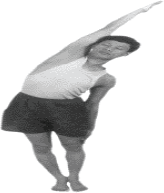 |
Parivruta Trikonasana | 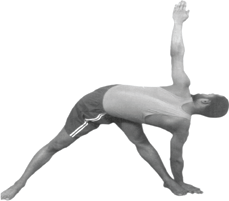 |
| Ardhachkrasana | 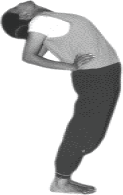 |
Padahastasana | 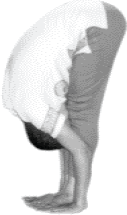 |
| Vriksasana | 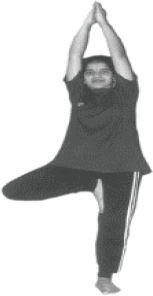 |
Uddhyana Bhandha | 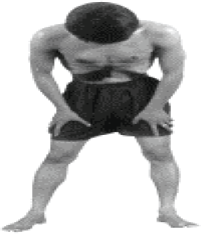 |
| SITTING POSTURE | |||
| Ardhamasyendrasan | 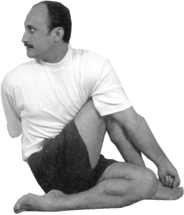 |
Paschimottanasana | 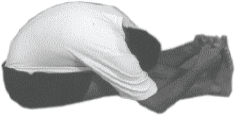 |
| Ustrasana | 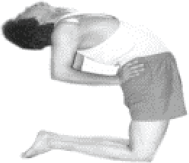 |
Vakrasana both side | 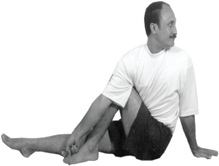 |
| Gomukhasana | 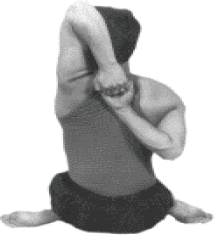 |
Baddhakonasana | 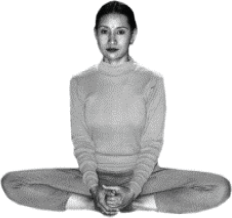 |
| PRONE POSTURE | |||
| Bhujangasana | 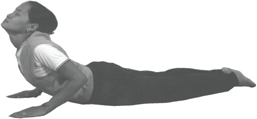 |
Dhanurasans | 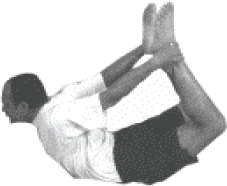 |
| SUPINE POSTURE | |||
| Viparitakarani with wall support | 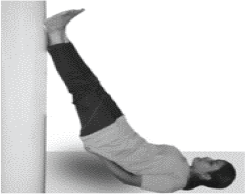 |
Matsysasana |  |
| Pavanamuktasana | 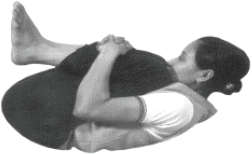 |
Navasana | 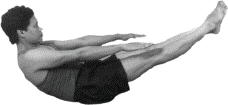 |
| Setubandhaasana | 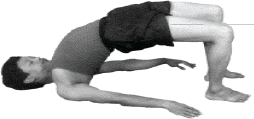 |
Savasana
(DRT) - 8–10 m. |
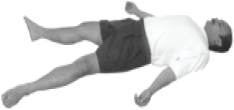 |
Prānayāma & Kriya (30–45 min)
Table 5: Pranayama and Kriya
| Kapalabhati Kriya | 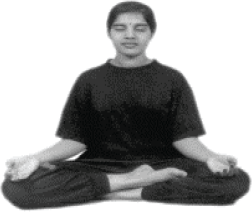 |
Abdomen Breathing | 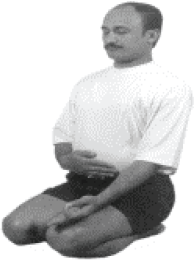 |
| Thoracic Breathing | 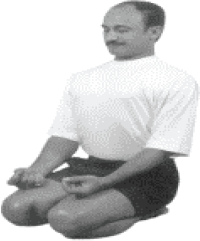 |
Clavicular Breathing | 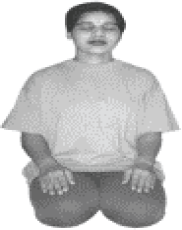 |
| Full Yogic Breathing | 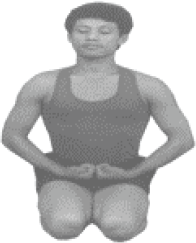 |
Nadi Sudhi Pranayama | 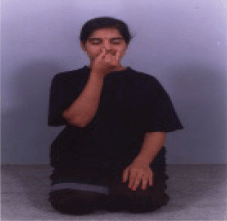 |
| Nadanusandhana
A-U-M, AUM, OM |
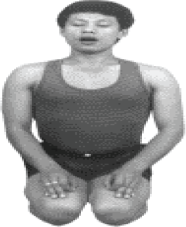 |
(Brahmari, Pranayama) | 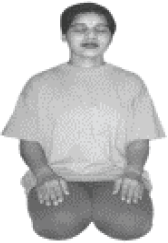 |
| Jala Neti | 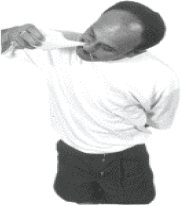 |
Sutra Neti | 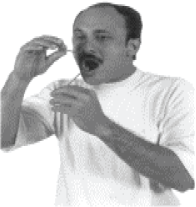 |
| Vamana Dhauti | 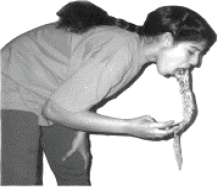 |
MSRT: The mind sound resonance technique was also introduced to the patient once every evening. The main aim of this approach was to strengthen willpower and promote positive health.
Naturopathy
The patient underwent naturopathy treatment only for the first six days for general body detoxification and relaxation. The treatment details are mentioned in (Table 6).
Table 6: Naturopathy treatment
| Date | Treatment 1 | Treatment 2 |
|---|---|---|
| 4/01/2023 | Mud pack to the abdomen and Eye + Neutral enema | Oil application to whole body + sauna bath with a cold chest pack |
| 5/01/2023 | Kriya | Neutral underwater massage with Epsom salt |
| 6/01/2023 | Mud pack to the abdomen and eye | Full body massage + steam bath |
| 7/01/2023 | Kriya | Steam bath with cold chest pack |
| 8/01/2023 | Mud pack to abdomen and eye | Reflexology |
| 9/01/2023 | Mud pack to eye and abdomen | Vibro massage to the whole body |
Diet
The role of dietary management is to assist the participant
• For losing weight and establishing a healthy eating routine.
• Maintaining the calorie intake.
• Improving nutritional capacity.
• Improving metabolism.
The detailed diet chart of the patient is mentioned in (Table 7).
Table 7: Diet chart
| Date | 08:00 am | 10:15 am | 01:00 pm | 05:00 pm | 07:30 pm |
|---|---|---|---|---|---|
| 4/01/2023 | Sprouts | Juice | Boiled diet | Vegetable soup | Raw diet |
| 5/01/2023 | Khichadi | Juice | Raw diet | Vegetable soup | Raw diet |
| 6/01/2023 | Millet khichadi | Juice | Raw diet | Vegetable soup | Raw diet |
| 7/01/2023 | Khichadi | Juice | Boiled diet | Vegetable soup | Boiled diet |
| 8/01/2023 | Khichadi + sprouts | Juice | Boiled diet | Vegetable soup | Boiled diet |
| 9/01/2023 | Normal breakfast | Juice | Boiled diet | Vegetable soup | Boiled diet |
1. The Pittsburgh Sleep Quality Index (PSQI)
The Pittsburgh Sleep Quality Index (PSQI) is a one-month self-administered questionnaire that assesses sleep quality and interruptions. The PSQI has seven component scores that range from 0 (no problem) to 3 (severe difficulty): subjective sleep quality, sleep latency, sleep duration, habitual sleep efficiency, sleep disruptions, the use of sleeping medication, and daytime dysfunction. The component scores are combined to generate a global score (range 0 to 21). Higher scores indicate inferior sleep quality (16).
2. Bhramari Time
This variable helps to measure the oxygen intake capacity of the patient. As the patient’s condition improves, the oxygen intake and so will the bhramari time. Bhramari time is directly proportional to oxygen intake and patient health improvement.
The patient was taking allopathic medicine which was eventually tapered down during her stay. After 27 days of yoga therapy practice, the patient was feeling better clinically and got relief from her chronic insomnia. Her PSQI score was reduced, she started getting sound sleep at night and she was no longer dependent on medication for sleep. The patient personally felt that practicing MSRT helped in improving her sleep. Whenever she did MSRT, after the session, she felt calm in her mind, she was able to relax completely, physically and mentally which eventually helped to induce sound sleep in her condition. Followed by regular investigations and vital checkups, the medication for Diabetes mellitus and Hypertension was also tapered down and eventually stopped. There was a noticeable inch loss along with weight loss also seen in a patient after the treatment. Overall the “Quality of life” of the patient was seen to be improved. All the parameters and medicinal history, at the time of discharge, are mentioned in (Table 8) and (Table 9) respectively.
Table 8: Parameters (OAD – On admission date: ODD – On discharge date)
| Parameters | OAD | ODD | Parameters | OAD | ODD |
|---|---|---|---|---|---|
| Pulse (Beats/min) | 72 | 78 | Weight (Kg) | 82.3 | 78.6 |
| Blood Pressure (mmHg) | 122/70 | 104/70 | BMI (Kg/m2) | 37.6 | 35.9 |
| Respiratory (Rate/min) | 16 | 14 | Symptom Score | 0 | 0 |
| Bhramari Time (sec) | 11 | 18 | Medication score | 3 | 1 |
| Height (cm) | 148 | 148 | PSQI Score | 17 | 7 |
| Mid-arm circumference (cm) | 30 | 29 | Waist circumference (cm) | 117 | 102 |
| Hip circumference (cm) | 120 | 116 | Thigh circumference (cm) | 56 | 50 |
Table 9: Medicinal History (OAD – On admission date: ODD – On discharge date)
| Sr. | Medicine | OAD | ODD |
|---|---|---|---|
| 1. | Forxigo 10 mg | 1-0-0 | 0-0-0 |
| 2. | Zolfresh 10 mg | 0-0-1 | 0-0-0 |
| 3. | BTN Ultra | 0-1-0 | 0-1-0 |
Discussion
Insomnia is broadly defined as dissatisfaction with sleep either qualitatively or quantitatively. Insomnia is a condition in which there is a problem initiating or maintaining sleep which can be there due to various psychological and physiological factors (17). In the present case psychological disorders like anxiety and depression stimulated the stress response and stress hormones in the body which eventually caused chronic insomnia.
Yoga is a lifestyle modifier that outwardly involves physical postures, breathing exercises, and meditation techniques with mindfulness to promote the balance between the mind and the body (18). Yoga has helped to reduce stress and promote health and feelings of well-being. Once there is a reduction in stress hormones automatically it helped in managing the symptoms of anxiety and depression causing sleep disturbances. Vital parameters also showed positive changes and Medication was been stopped completely. Mind Sound Resonance Technique (MSRT) is an advanced technique that can take you into a deeply rested state of the mind-body complex through experiencing internal sound resonance all over the body. It has helped to strengthen willpower and promotes positive health in patients’ conditions. According to the patient’s feedback, MSRT helped to induce deep relaxation, which eventually helped to improve sleep. Evident improvement in all the variables was seen post-MSRT intervention such as PSQI score pre (17), PSQI score post (7), Bhramani time pre (11 sec), Bhramari time post (18), along with inch loss there was a reduction in weight from 82.3 kg to 78.6 kg. Integrative medicine has an impact on all aspects of health like Mental, physical, social as well as spiritual levels, and because of this, the patient got relief in every aspect.
Conclusion
Integrative therapy was found to be positively affected in remission on condition and symptomatic relive as well as stress conditions. Mind Sound Resonance Technique (MSRT) is effective in psychological factors/Stress-related Insomnia and improves PSQI score in patients with Insomnia.
Limitation
It’s a single case study, for future studies Randomised control trial with a longer sample size is needed to prove the effectiveness of the Mind Sound Resonance Technique (MSRT) on psychological factors or Stress-related Insomnia.
Acknowledgment
I want to offer my salutations to the almighty and my parents from the bottom of my heart. Additionally, I would like to thank Dr. Reshma who was instrumental in the success of this project. I would like to thank Dr. Nagarathna, and Dr. Amit Singh for their advice and encouragement to pursue this course of study. Special thanks to Mr. Sumit Aundhekar for giving me this opportunity and permission to write this case study during my internship at SYVASA. I am grateful to the section therapist Mr. Kiriti for his direction and for enabling me to offer therapy. I would like to thank Mr. Parameshwar Some and Mr. Surajit Kar for their technical help. And lastly, I would like to thank the patient for giving consent to write this case study.
Authors’ contribution
VKS, GM, RPJ: has written an article; RPJ, NR: guided to write an article; AS: has contributed to treatment planning; KBG, KSN: Treatment execution.
Informed consent
The study was verbally explained to the patient and written consent was signed by the patient.
Conflict of interest
None.
Source of funding
None.
Received Date: 27-03-23; Revised Date: 19-06-23
Accepted Date: 28-06-23
References
1. Sateia MJ. International classification of sleep disorders-third edition highlights and modifications. Chest. 2014 Nov;146(5):1387–94.
2. Morin CM, Benca R. Chronic insomnia. Lancet. 2012 Mar;379(9821):1129–41.
3. Ellis JG, Perlis ML, Neale LF, Espie CA, Bastien CH. The natural history of insomnia: Focus on prevalence and incidence of acute insomnia. J Psychiatr Res. 2012 Oct;46(10):1278–85.
4. Ohayon MM. Observation of the Natural Evolution of Insomnia in the American General Population Cohort. Sleep Med Clin. 2009 Mar;4(1):87–92.
5. DiBonaventura M, Richard L, Kumar M, Forsythe A, Flores NM, Moline M. The Association between Insomnia and Insomnia Treatment Side Effects on Health Status, Work Productivity, and Healthcare Resource Use. PLoS One. 2015 Oct 1;10(10):e0137117.
6. Leigh JP. Employee and job attributes as predictors of absenteeism in a national sample of workers: The importance of health and dangerous working conditions. Soc Sci Med. 1991 Jan;33(2):127–37.
7. Wang W-L, Chen K-H, Pan Y-C, Yang S-N, Chan Y-Y. The effect of yoga on sleep quality and insomnia in women with sleep problems: a systematic review and meta-analysis. BMC Psychiatry. 2020 Dec 1;20(1):195.
8. Vempati RP, Telles S. Yoga-Based Guided Relaxation Reduces Sympathetic Activity Judged from Baseline Levels. Psychol Rep. 2002 Apr;90(2):487–94.
9. Bhargav H, Metri K, Dhansoia V. Immediate effect of mind sound resonance technique on state anxiety and cognitive functions in patients suffering from generalized anxiety disorder: A self-controlled pilot study. Int J Yoga. 2015;8(1):70.
10. Anusuya US, Mohanty S, Saoji AA. Effect of Mind Sound Resonance Technique (MSRT – A yoga-based relaxation technique) on psychological variables and cognition in school children: A randomized controlled trial. Complement Ther Med. 2021 Jan;56:102606.
11. Bonnet MH, Arand DL. Hyperarousal and insomnia: State of the science. Sleep Med Rev [Internet]. 2010 Feb;14(1):9–15. Available from: https://linkinghub.elsevier.com/retrieve/pii/S1087079209000458
12. Riemann D, Spiegelhalder K, Feige B, Voderholzer U, Berger M, Perlis M, et al. The hyperarousal model of insomnia: A review of the concept and its evidence. Sleep Med Rev. 2010 Feb;14(1):19–31.
13. Buysse DJ. Insomnia. JAMA. 2013 Feb 20;309(7):706.
14. Levenson JC, Kay DB, Buysse DJ. The Pathophysiology of Insomnia. Chest. 2015 Apr;147(4):1179–92.
15. Wichniak A, Wierzbicka A, Walęcka M, Jernajczyk W. Effects of Antidepressants on Sleep. Curr Psychiatry Rep. 2017 Sep 9;19(9):63.
16. Buysse DJ, Reynolds CF, Monk TH, Berman SR, Kupfer DJ. The Pittsburgh sleep quality index: A new instrument for psychiatric practice and research. Psychiatry Res. 1989 May;28(2):193–213.
17. Patel D, Steinberg J, Patel P. Insomnia in the Elderly: A Review. J Clin Sleep Med. 2018 Jun 15;14(06):1017–24.
18. Karri R, Bhavanani A, Ramanathan M, Mopidevi V. Methodological issues in yoga therapy research among psychiatric patients. Indian J Psychiatry. 2023;65(1):12.